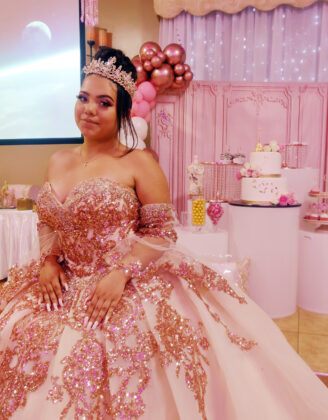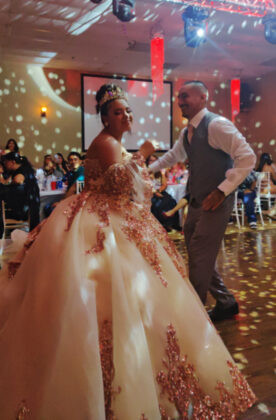The term “Quinceañera” is deeply rooted in Latin American culture, representing a significant milestone in a young girl’s life as she turns fifteen. More than just a birthday, a Quinceañera is a vibrant celebration marking the transition from childhood to womanhood, rich with history, tradition, and, most notably, dance. This guide delves into the heart of a Quinceañera, exploring the dances that are integral to this cherished tradition.
The Historical Significance of Quinceañera Celebrations
To truly appreciate the dances in a Quinceañera, it’s essential to understand the celebration’s historical context. The roots of the Quinceañera can be traced back centuries to ancient rites of passage. In these early traditions, young girls were separated from their childhood peers and mentored by women within the community. This period of instruction focused on preparing them for their future roles as wives and mothers, imparting essential knowledge for their adult responsibilities.
These rites of passage culminated in formal ceremonies where young women pledged their service to the community. In turn, the community acknowledged their emerging roles, recognizing them as future wives and mothers. Over time, with the arrival of missionaries, these rites evolved into personal affirmations of faith, intertwining with church celebrations.
Quinceañera Traditions Today: The Celebration Unfolds
In contemporary times, the Quinceañera has blossomed into a grand celebration, often likened to a wedding in its scale and festivity. Families may begin planning and saving for this significant event years in advance, sometimes even from the girl’s early childhood. The preparation period itself can extend from six months to two years, highlighting the importance and complexity of organizing a Quinceañera.
Dance is undeniably central to the Quinceañera celebration. Among the various traditions, dance holds a prominent place, with specific dances carrying deep symbolic meaning and adding to the event’s emotional and celebratory atmosphere.
One of the most anticipated and gracefully choreographed dances is the waltz, traditionally performed by the Quinceañera and her court of honor. Known as “El Vals,” this elegant dance typically marks the beginning of the reception or takes place during a significant moment in the celebration. Often, it serves as the first dance of the evening, with the Quinceañera initially partnering with her father, symbolizing his daughter’s first steps into womanhood. Beyond the waltz, the celebration often includes a “surprise dance” and a father-daughter dance, with guests and celebrants joining in on lively rhythms like Salsa, Cumbia, Cha-Cha, Merengue, Bolero, and Rumba.
Traditional Dances in a Quinceañera: A Closer Look
 Quinceañera dance choreography
Quinceañera dance choreography
Traditionally, a Quinceañera celebration features three core dances, known as “bailes”:
-
The Entrance Waltz (El Vals): This is the quintessential Quinceañera dance. It’s a formal and symbolic dance that often opens the dance portion of the celebration. The waltz signifies the Quinceañera’s transition and her formal presentation to society as a young woman.
-
The Surprise Dance (Baile de Sorpresa): Offering a contrast to the traditional waltz, the surprise dance is a more modern and energetic segment. It allows the Quinceañera to showcase her personality and style through a choreographed routine, often incorporating popular music and diverse dance styles.
-
The Father/Mother-Daughter Dance (Baile de Mama/Papa): This emotionally resonant dance is a poignant moment shared between the Quinceañera and her father (or mother, or a significant father figure). It symbolizes the father’s blessing and support as his daughter enters a new phase of life.
These dances are not simply performed spontaneously; they require dedicated preparation and practice. The Quinceañera and her court spend considerable time learning choreography and rehearsing to ensure a polished and memorable performance for their guests. Alongside dance preparation, planning for decorations, the Quinceañera cake, and the all-important dress also demands significant time and effort. Fortunately, resources such as expos, websites, and magazines are readily available to assist Quinceañeras in orchestrating their perfect birthday celebrations.
The Father-Daughter Dance: An Emotional Centerpiece
 Father-daughter Quinceañera dance
Father-daughter Quinceañera dance
The father-daughter dance remains a deeply moving highlight of the Quinceañera celebration. It’s a visual representation of the Quinceañera’s first dance as a young woman, shared with her father. This moment is charged with emotion, symbolizing a father’s pride and love as he acknowledges his daughter’s growth. In situations where the father is not present, a respected older male figure who has played a paternal role often takes his place, preserving the significance of this dance.
Typically set to a waltz, the father-daughter dance provides an opportunity for the father to offer his daughter encouragement as she embarks on her journey into womanhood. Following this heartfelt dance, the Quinceañera’s chambelan (escort) traditionally approaches the father to formally request permission to dance with the birthday girl, signifying another step in her social transition.
The family waltz usually follows, extending the dance floor to include the Quinceañera’s immediate family and closest friends. This group waltz, often involving up to twenty dancers – ten chambelanes and ten damas (members of the Royal Court) – creates a visually stunning and inclusive moment. To ensure a synchronized and graceful performance, these dancers often invest in professional Quinceañera dance lessons, dedicating five to ten hours of practice prior to the event.
The Surprise Dance: Personalizing the Celebration
While the waltz and father-daughter dance are steeped in tradition, the “surprise dance” segment offers a chance for personalization and modern flair. Many Quinceañeras consider planning this dance to be one of the most enjoyable aspects of the entire celebration. Often, families engage a professional Quinceañera dance choreographer to help create a unique and dynamic routine for the Quinceañera and her court.
The surprise dance embraces a wide array of musical genres and dance styles. From hip-hop and tango to cha-cha, bachata, reggaeton, and more, the possibilities are vast. This segment allows the Quinceañera to express her individuality and preferences, making the celebration uniquely hers.
The visual presentation of the surprise dance is also carefully considered. The damas and chambelanes typically wear coordinated outfits that complement the chosen dance style and music. The Quinceañera herself often wears an outfit that harmonizes with her court’s attire but with subtle distinctions to ensure she remains the focal point. Costumes are chosen not only for their aesthetic appeal but also for their practicality, allowing for freedom of movement while reflecting the energy and character of the dance.
Beyond the choreographed dances, open floor dancing is another vital element of the Quinceañera. This segment invites all guests to participate, freestyle dancing to a mix of music. Modern Quinceañeras often incorporate DJs, live bands, dance shows, and even mariachi bands to enhance the entertainment and musical variety. In the United States, music selections for both traditional and open dance segments frequently include a mix of Spanish and English songs, reflecting the diverse cultural influences present in these celebrations.
The Quinceañera tradition remains remarkably universal within Latin American cultures. Even for second and third-generation Hispanic families in the United States, the Quinceañera continues to be a cherished and actively practiced tradition. Dance, with its rich symbolism and expressive power, has consistently been and continues to be a defining and integral feature of this significant celebration.
Quinceañero for Boys: Expanding the Tradition
While Quinceañeras are traditionally centered on young women, a parallel celebration, the Quinceañero, is gaining popularity for young men turning fifteen. This event similarly honors a young man’s transition into adulthood, incorporating comparable fanfare and customs. While dances may differ in style, the emphasis on marking this milestone with a significant celebration remains.
Dance and Tradition in Quinceañeros
While specific dances in a Quinceañero might vary, dance still plays a meaningful role in the celebration. Elements like a choreographed entrance, a father-son dance (or dance with a mentor), and even surprise dance segments are increasingly incorporated. The focus shifts to reflect the young man’s personality and interests, but the celebratory spirit and the importance of marking this transition with dance endure.
Dance Engagements, with its expertise in choreography and event planning, is well-equipped to assist with both Quinceañeras and Quinceañeros, ensuring that dance elements are seamlessly integrated and contribute to a memorable and meaningful celebration for both young women and men.
For those seeking expert guidance in choreographing Quinceañera dances, particularly in the Los Angeles area, Dance Engagements offers professional and personalized services. Their experienced instructors can create unique dance routines tailored to individual preferences and event themes, ensuring that the dance portion of the Quinceañera is both spectacular and deeply personal.
GET IN TOUCH to learn more about creating unforgettable Quinceañera dances.


